Employee strengths and weaknesses
Your employees are the lifeblood of your company. From day-to-day operations to your corporate culture, selecting and maintaining the right workforce can make or break your business.
Understanding and evaluating strengths and weaknesses is essential to keeping your team motivated and your company efficient. The easiest way to monitor these qualities is through effective Performance Appraisal.
Filling out an employee form as you evaluate each employee provides a permanent record for both you and them. You can make the form as detailed or as open-ended as you want, depending on how much feedback you want to gather, but there are two essential topics you should cover in an employee evaluation form or performance appraisal: strengths and weaknesses.
Conduct employee evaluations on any device with Jotform’s employee performance review form template!
What are employee strengths and weaknesses?
Every employee is different. Each has varying work styles, attitudes, and capabilities. But what do strengths and weaknesses look like in the workplace?
Employee strengths are the positive traits, skills, or behaviors that contribute to success in a role. These can include hard skills, soft skills, work ethic, or personal qualities that add value to the organization.
Employee weaknesses, on the other hand, are areas where improvement is needed. If left unaddressed, they can affect performance, team dynamics, or overall productivity. Identifying and supporting employees in these areas is just as important as recognizing strengths.
Pro-Tip
Create employee evaluation forms for your company without any coding and fill them out on any device.
Why are employee strengths important?
Recognizing and understanding employee strengths is essential for building a high-performing, motivated workforce. When employees are encouraged to use their strengths, they tend to feel more confident, satisfied, and engaged in their roles — all of which contribute directly to organizational success.
Here’s why highlighting these strengths matters:
- Boosts morale and motivation: Acknowledging what employees do well reinforces positive behavior and shows that their contributions are valued.
- Increases productivity: Employees who work in roles aligned with their strengths are typically more efficient and effective.
- Supports career development: Strength-based feedback helps team members identify growth areas and align their personal goals with the organization’s needs.
- Improves team performance: Understanding each employee’s strengths allows managers to assign tasks more strategically and build well-balanced teams.
- Drives retention: Employees who feel seen and supported in their strengths are more likely to stay committed to the organization long-term.
Examples of employee strengths
Some common employee strengths include
- Creativity: Brings new ideas and approaches to solve problems and improve processes.
- Adaptability: Adjusts quickly to change and thrives in dynamic environments.
- Technical proficiency: Demonstrates strong understanding and use of relevant tools and technologies.
- Focus: Stays on task and minimizes distractions to complete work efficiently.
- Self-starting attitude: Takes initiative without needing constant supervision.
- Transparency: Communicates openly and honestly with team members and leadership.
- Willingness to learn: Embraces new knowledge and actively seeks learning opportunities to improve performance.
- Receptiveness to feedback: Listens actively and takes constructive criticism well.
- Motivation: Shows consistent enthusiasm and drive to accomplish goals.
- Commitment: Remains dedicated to team objectives and long-term company success.
- Strong communication: Expresses ideas clearly in written and verbal formats.
- Empathy: Understands and respects the feelings and perspectives of others.
- Collaboration: Works well in teams and contributes meaningfully to group efforts.
- Time management: Organizes and prioritizes tasks effectively to meet deadlines.
- Work ethic: Approaches tasks with dedication, integrity, and professionalism.
- Problem-solving: Identifies root causes and applies logical solutions.
- Leadership potential: Motivates others and takes initiative on group tasks.
- Attention to detail: Delivers high-quality work with minimal errors.
- Decision-making ability: Makes thoughtful, timely choices even under pressure.
- Conflict resolution: Navigates disagreements calmly and constructively.
- Customer orientation: Prioritizes the needs and satisfaction of clients or stakeholders.
- Accountability: Takes responsibility for successes and mistakes.
- Goal orientation: Keeps focus on achieving measurable outcomes.
- Emotional intelligence: Recognizes and regulates one’s own emotions.
- Cultural sensitivity: Respects diversity and contributes to an inclusive workplace.
- Reliability: Can be counted on to meet commitments and follow through.
- Organizational skills: Keeps information, tools, and priorities well-arranged and accessible.
- Strategic thinking: Aligns work with broader company goals and long-term impact.
Examples of employee weaknesses
Some common employee weaknesses include
- Lack of confidence: Hesitates to speak up or take ownership of tasks.
- Being overly critical: Tends to focus on flaws in others rather than offering support.
- Aversion to feedback: Struggles to accept constructive criticism or guidance.
- Stubbornness: Resists alternative ideas or changing course even when needed.
- Passiveness: Avoids decision-making or defers responsibility too often.
- Procrastination: Delays tasks unnecessarily, impacting deadlines and team flow.
- Over-sensitivity: Reacts emotionally to routine feedback or challenges.
- Disorganization: Struggles to manage time, tasks, or information effectively.
- Self-centered attitude: Prioritizes personal success over team goals.
- Poor communication: Fails to convey ideas clearly or listen effectively.
- Micromanagement: Struggles to delegate or trust team members.
- Inflexibility: Resists change or new ideas, even when beneficial.
- Low resilience: Has difficulty recovering from setbacks or criticism.
- Avoidance of conflict: Fails to address issues, leading to unresolved tension.
- Lack of initiative: Waits for direction instead of proactively identifying needs.
- Difficulty prioritizing: Focuses on low-impact tasks while ignoring urgent matters.
- Low attention to detail: Frequently makes preventable errors in work.
- Ineffective problem-solving: Struggles to analyze situations or find workable solutions.
- Codependence: Leans too heavily on teammates to complete tasks.
- Negativity: Frequently complains or displays a pessimistic attitude.
- Difficulty with feedback delivery: Gives criticism in unhelpful or hurtful ways.
- Low emotional intelligence: Has trouble understanding others’ feelings or managing their own.
- Tendency to overcommit: Takes on too much work and fails to deliver on promises.
- Lack of focus: Becomes easily distracted and struggles with concentration.
- Unclear boundaries: Struggles to separate personal and professional roles.
- Fear of failure: Avoids challenges due to anxiety about making mistakes.
- Overdependence on technology: Relies on tools without understanding underlying concepts.
- Lack of curiosity: Shows little interest in learning or professional growth.
- Hyper-independence: Prefers working alone and resists group dynamics.
- Failure to align with company values: Acts in ways that don’t support the organization’s mission or culture.
Common criteria for employee performance appraisals
Giving employees positive feedback is one of the best ways to keep them engaged (and employee engagement is a top challenge identified by HR professionals). But it’s not enough to simply praise an employee for doing a good job. Delivering honest, constructive feedback motivates employees, reinforces positive behavior, and boosts employee confidence.
Including strengths and weaknesses in performance appraisals shows employees you notice and appreciate their contributions. Elaborating on their strengths as well as identifying specific areas where they can improve helps them evaluate their own performance and understand how to move forward.
Here are six of the most common employee criteria to evaluate in a performance appraisal.
Teamwork
Working effectively with clients, managers, and coworkers is crucial for a cohesive and enjoyable work environment. Working alongside others, no matter the industry, is how we achieve goals, find creative solutions to problems, and change organizations for the better. On the other hand, not working well with others affects team morale and makes it difficult for coworkers to collaborate and solve problems.
Evaluating employees’ teamwork skills helps you gauge each individual’s contribution and determine if they are meeting their responsibilities. Measuring this skill regularly ensures employees are living up to the standards you set for them.
Adaptability
Your employees need to perform their jobs successfully in a rapidly changing environment. The ability to handle change and embrace new procedures are indispensable skills for employees to have — especially during a crisis.
Evaluating adaptability is crucial in determining whether an employee will embrace new technology, responsibilities, and ever-changing customer needs to align with an evolving company culture. Those who are rigid and resistant to change undermine productivity and lower morale.
Interpersonal skills
Employee harmony is important, but not all employees interact in the same ways. The ability to relate to peers, managers, and direct reports is an important skill to evaluate when reviewing strengths and weaknesses in performance appraisals.
Everyone on your team needs to foster strong working relationships with coworkers, clients, and vendors. These characteristics help create the positive work environment teams need to be productive. Plus, evaluating an employee’s interpersonal skills will help you determine what tasks to assign them.
Job knowledge
Evaluating each employee for the knowledge, expertise, and skills pertinent to their job deepens your insight into that person’s strengths and the training they need to be a well-rounded teammate. A typical analysis will include knowledge of facts, rules, and procedures, as well as what the job requires and how to do it.
Evaluating these skills helps you identify who the best performers are so you can reward them accordingly. Finally, evaluating job knowledge can help you gauge employee leadership capabilities. This is how you make sure you have the right person in the right position and optimize your talent to minimize your organization’s weaknesses.
Attention to detail
When an employee shows strong attention to detail, they’re completing tasks thoroughly and accurately. They help the entire organization avoid mistakes — like ordering too much product or paying a supplier late.
Reviewing employees for these traits is crucial, as mistakes can be costly. Be sure to praise employees who are organized and double-check their work to encourage others to do the same.
Pro-Tip
Sign up for a free Jotform account to create powerful online forms in minutes — with no coding required.
Communication
Communication is essential to presenting and understanding information quickly and accurately. Strong communicators can express themselves effectively in both the written and spoken word. They make clear statements, actively listen to others, and incorporate their peers’ feedback.
Poor communication skills often lead to costly misunderstandings and lost time and money. When evaluating this skill, take into account how an employee communicates verbally, visually, nonverbally, and in writing. Employees who communicate effectively help build a more positive and effective work environment.
There are several performance appraisal strengths and weaknesses that companies can — and should — evaluate in their employees. Being able to identify and praise strengths, as well as correct weaknesses, can make all the difference in your company’s well-being. By consistently evaluating employee performance, you can vastly improve both performance and company morale.
Emerging strengths and weaknesses of Gen Z and Millennials in the AI era
As Gen Z and Millennials take on a larger share of the workforce, it’s important to evaluate their performance with a modern perspective. These generations are highly tech-savvy, quick to adapt to change, and value purpose and impact in their work. Their comfort with AI-powered tools and digital platforms makes them valuable assets in innovation-driven environments.
One of their most notable strengths is digital fluency. Growing up with smartphones, social media, and cloud-based tools, they often lead the way in adopting new technologies and finding smarter ways to work. They’re also comfortable with continuous learning, which is critical in today’s rapidly evolving job landscape.
Additionally, they embrace change and tend to have a flexible mindset. Gen Z and Millennials are largely open to feedback and eager to grow, making them effective collaborators in agile team settings. Their desire to do meaningful work can translate into strong motivation, creativity, and loyalty when they feel aligned with an organization’s mission.
At the same time, new challenges have emerged. Constant exposure to social media can lead to fear of missing out (FOMO) and burnout. Many also experience imposter syndrome, doubting their capabilities even when they perform well. A lack of meaning or purpose in their tasks can reduce motivation and increase turnover risk. Lastly, an overreliance on digital tools may hinder face-to-face communication and relationship-building skills.
How to develop your employees’ strengths
Recognizing employee strengths is just the first step — the real impact comes when you nurture and develop those strengths over time. By helping your employees sharpen their natural abilities, you can unlock greater potential, build confidence, and foster long-term success for both the individual and your organization.
Here are some effective ways to develop employee strengths:
- Offer personalized training opportunities: Provide workshops, courses, or mentorship programs that align with each employee’s strengths to help them grow in those areas.
- Encourage strength-based roles and projects: Assign tasks that match employees’ strongest skills — this allows them to contribute more meaningfully while continuing to develop those capabilities.
- Provide regular, positive feedback: Reinforce their strengths by acknowledging when they apply them well. Timely, specific praise encourages continued improvement.
- Set stretch goals: Challenge employees to use their strengths in new or more advanced ways — such as leading a project or mentoring others.
- Create a growth-friendly environment: Promote a culture of learning where employees feel safe to experiment, ask questions, and take initiative using their natural abilities.
- Use strength-based performance evaluations: Focus part of the performance review on strengths and how the employee has contributed to the team. Then outline ways to expand on those strengths further.
Developing strengths isn’t just about helping employees do what they already do well — it’s about empowering them to reach the next level and aligning their growth with your business goals.
How to evaluate and strengthen employee performance
Performance appraisals are essential tools for understanding and improving employee performance. By evaluating both strengths and weaknesses, you can provide meaningful feedback, motivate your team, and guide professional development.
In an AI-driven work environment, it’s more important than ever to recognize emerging traits in younger employees, including both their digital strengths and modern-day challenges, like imposter syndrome and FOMO. Expanding your evaluations to include a wider range of traits and behaviors ensures you’re keeping pace with the evolving workplace.
Focusing on strengths helps reinforce positive behavior, build employee confidence, and align individual talent with organizational goals. At the same time, identifying weaknesses allows for proactive coaching and support that prevents performance issues down the line.
With the right tools — like customizable employee evaluation forms from Jotform — and a strength-based approach, your appraisals can do more than assess. They can empower, inspire, and build the foundation for a stronger, more resilient team.

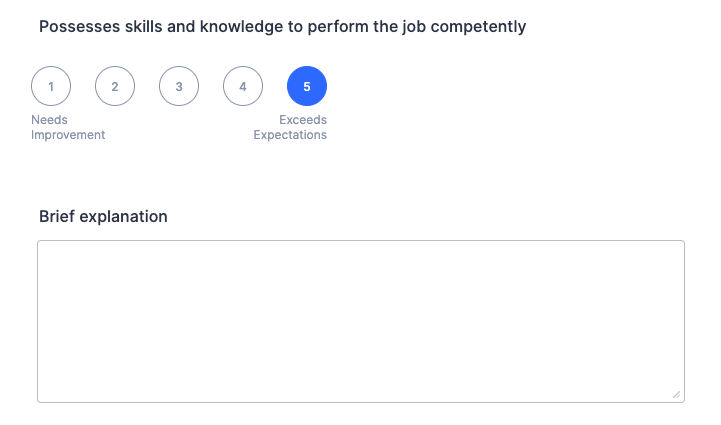











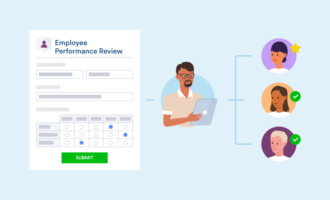





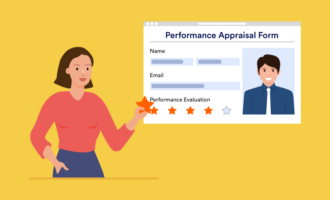


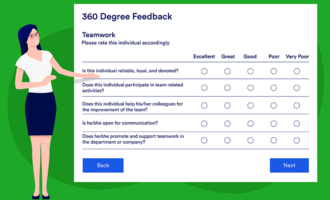

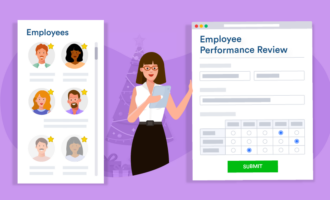


Send Comment:
1 Comments:
More than a year ago
Informative blog. It will help the employer to know about their employee's weakness and strength. by this the company will improve their growth.